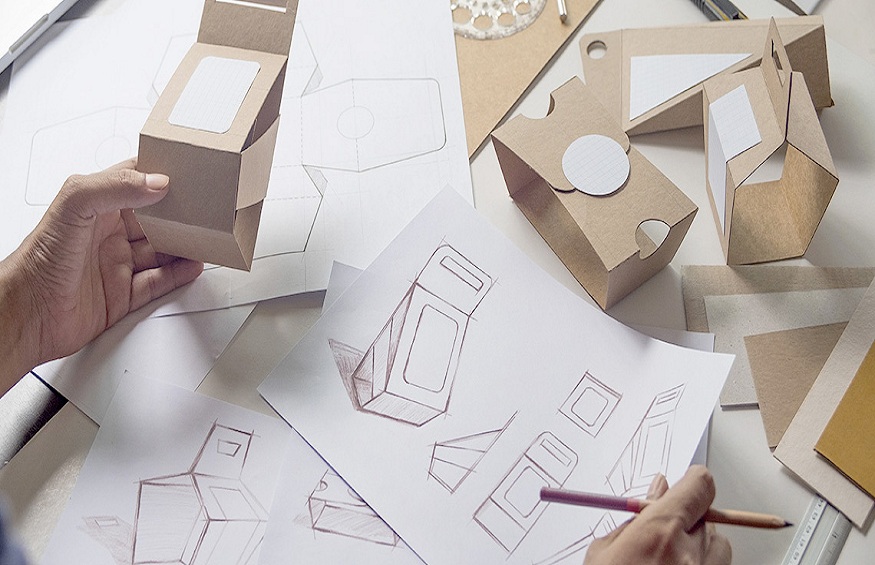In today’s marketplace where consumers are bombarded with numerous products vying for their attention, packaging design plays a pivotal role in capturing interest, conveying brand value, and influencing purchasing decisions. Good packaging design goes beyond aesthetics; it is a strategic tool that combines form and function to create a memorable and impactful experience for consumers. This article will explore the key elements that contribute to effective packaging design, enabling brands to stand out, connect with their target audience, and ultimately drive sales.
Clear Brand Identity and Messaging
Packaging designing refers to the process of creating the visual and structural elements of product packaging. It involves strategically designing the packaging to effectively communicate the brand’s identity, convey product information, and engage consumers. Packaging design encompasses various elements, including the choice of materials, colours, typography, graphics, and structural design. Here are the factors that continue to a great packaging design.
Good packaging design begins with a clear and compelling brand identity. Packaging should reflect the brand’s values, personality, and positioning, creating a cohesive visual language that resonates with the target audience. Consistency in branding elements such as logos, colours, typography, and imagery help establish brand recognition and reinforces the brand’s message.
Moreover, effective packaging communicates the product’s key features, benefits, and unique selling points. Whether through concise copy, visual cues, or innovative storytelling, packaging should clearly convey the value proposition to consumers, ensuring they understand what sets the product apart from competitors.
Functionality and Convenience
While aesthetics is essential, good packaging design also prioritises functionality and convenience. Packaging should be designed to protect the product, preserve its quality, and facilitate ease of use. Considerations such as appropriate materials, durability, and proper sealing are crucial to ensure the product reaches the consumer intact.
Additionally, packaging should be user-friendly, making it easy for consumers to open, access, and store the product. Intuitive design elements like handles, resealable closures, or clear instructions enhance the overall user experience and contribute to positive brand associations.
Differentiation and Shelf Impact
In a crowded marketplace, good packaging design must stand out and grab attention. Eye-catching visuals, unique shapes, and innovative structures can help a product differentiate itself from competitors on the shelf. By leveraging colour psychology, engaging graphics, and impactful imagery, packaging design can evoke emotions, trigger curiosity, and create a memorable brand presence.
Moreover, understanding the target audience is key to designing packaging that appeals to their preferences and aspirations. Researching consumer trends, market insights, and competitor analysis can provide valuable insights into designing packaging that aligns with consumer expectations and captures their interest at the point of purchase.
Sustainability and Eco-Friendliness
In an era where environmental concerns are increasingly prominent, good packaging design integrates sustainability and eco-friendliness. Consumers are becoming more conscious of the environmental impact of packaging materials, and brands that prioritise sustainability gain favour with environmentally-minded consumers.
Using recyclable, biodegradable, or compostable materials demonstrates a brand’s commitment to sustainability. Additionally, incorporating eco-friendly design practices, such as minimising packaging waste, optimising space utilisation, and reducing carbon footprint during production and distribution, contributes to a positive brand image and resonates with socially responsible consumers.
Emotional Connection and Unboxing Experience
Beyond the functional aspects, good packaging design aims to create an emotional connection with consumers. Packaging can evoke positive emotions and enhance the overall product experience. The unboxing process, for example, presents an opportunity to surprise and delight consumers, leaving a lasting impression.
Thoughtful details such as personalised messages, special inserts, or interactive elements can enhance the unboxing experience and generate positive word-of-mouth. Brands that prioritise creating memorable moments through their packaging design foster a sense of loyalty and increase the chances of repeat purchases.
In today’s competitive market, good packaging design has the power to make a lasting impression and influence consumer behaviour. It goes beyond mere visual appeal and encompasses elements that enhance the overall brand experience. By investing in well-designed packaging, brands can differentiate themselves, establish strong brand recognition, and drive customer loyalty.
Effective packaging design combines aesthetics, functionality, and strategic brand communication. By paying attention to clear brand identity, functionality and convenience, differentiation and shelf impact, sustainability, and emotional connection, brands can create packaging that not only catches the eye but also resonates with consumers on a deeper level.
Ultimately, good packaging design is a result of careful consideration of the brand’s identity, target audience, and market dynamics. It requires a balance between aesthetics and functionality, innovation and sustainability, and emotional connection and practicality. Brands that prioritise these elements in their packaging design create a tangible representation of their brand values and effectively communicate their products’ unique selling points. As the consumer landscape continues to evolve, staying attuned to emerging trends and consumer preferences is crucial. Brands should regularly assess and adapt their packaging design to meet evolving customer expectations and align with changing market dynamics.
In conclusion, good packaging design is a multifaceted discipline that requires a holistic approach. It encompasses clear brand identity, functional and convenient packaging, differentiation and shelf impact, sustainability, and emotional connection. By considering these key elements and striving for excellence in packaging design, brands can create a compelling visual presence, establish strong connections with consumers, and achieve success in the competitive marketplace. Remember, packaging is not just a protective shell for a product; it is an opportunity to captivate, engage, and leave a lasting impression on consumers.
Contact us if you are looking for packaging design in Sydney.





